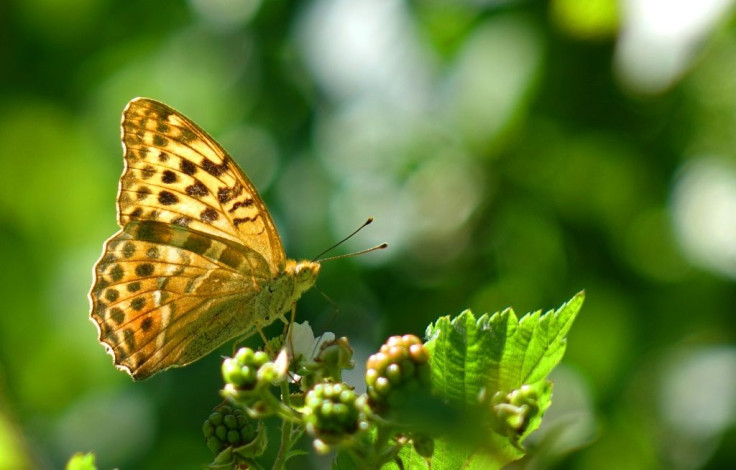Butterflies Create Jet Propulsion With A Clap Of Their Wings
The whimsical, wafting flight of butterflies may not give the impression of top aerodynamic performance, but research published on Wednesday suggests their large flexible wings could be perfectly designed to give them a burst of jet propulsion.
Scientists at Lund University in Sweden set out to verify a decades-old theory that insects "clap" their wings together, squeezing out the air between with such force that it thrusts them forward.
In their aerodynamic analysis of free-flying butterflies published in the journal Interface, they showed that the clap function does generate a jet of air propulsion.
But they also found that the butterflies perform this move "in a far more advanced way than we ever realised", said co-author Per Henningsson, a professor in the department of biology at Lund University.
At the moment the wings beat together they "were not just two flat surfaces slamming together", he told AFP.
Instead, they form a "pocket" shape believed to trap more air.
When the researchers recreated this using mechanical wings, they found that those with butterfly-like flexibility that form this pocket at the moment of impact were 22 percent more effective in the amount of force created and 28 percent more efficient in the amount of energy used compared with rigid wings.
The team suggested that their findings could have uses for drones that use clapping wing propulsion.

Henningsson said the "dramatic improvement" in performance came as a surprise.
"This is the type of finding that is the most exciting for a scientist -- the ones you didn't really expect," he said.
Butterfly wings "although conventionally considered aerodynamically inefficient" might be particularly good at forming this pocket shape, he added, suggesting they may have evolved enhance clap propulsion as a way to evade predators that might spot them as they take off.
"To minimise the risk of capture, butterflies typically take off very fast and suddenly and many of them fly in an erratic and unpredictable manner," he said.
"If indeed the clap is improved dramatically by the cupped shape of the wings this would allow a butterfly to take off faster and avoid being captured better, and hence you can imagine a strong selective pressure on this feature."
The study suggested other creatures -- like fish or frogs -- may also have developed clapping propulsion using cupped wings, fins or feet.
Henningsson said while the theory of the wing clap has been around since the 1970s, studies on butterfly flight had often relied on tethered butterflies or used simulations.
But improvements in technology to measure flow meant the authors were able to observe the creatures in natural flight.
© Copyright AFP {{Year}}. All rights reserved.





















